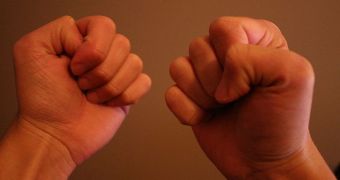Whenever people hurt themselves, viewing the affected spot may be the first thing to do in order to quell the pain response. A new research shows that looking at your body is a very effective method of diminishing the amount of pain you are feeling after an injury.
In the investigation, an international team of experts looked at how people responded to pain once a hot object touched their hands. They discovered that the the test subjects were a lot more likely to report less pain after the viewed the spot on their hands were the object touched them.
The research was conducted by English experts at the University College London (UCL), who worked closely with Italian scientists from the University of Milano-Bicocca, PsychCentral reports.
One of the most interesting findings the team made was that people tended to experience a greater pain-reduction effect if their hand appeared to be larger than it was in real-life. In other words, pain levels were directly connected to the size of the participants' hands.
Some 18 people volunteered to participate in the new investigation, and they agreed to let the experts place a hot probe on their left hand. They then had to report about how they perceived the ensuing pain.
“The image that the brain forms of our own body has a strong effect on the experienced level of pain,” explains the lead author of the study, UMB investigator Flavia Mancini.
“Moreover, the way the body is represented influences the level of pain experienced,” she adds.
In the experiments, participants had control over the heated probe placed on their hands. They could chose to stop it at any time by pressing a foot pedal. But the catch is that they could not see their hands.
Researchers installed a set of mirrors, that allowed the test subjects to see either their hand at normal size, their hands enlarged a bit, or a wooden block. The research team had control of the mirrors.
If the participants could view their hands, they had on average a higher tolerance to heat, enduring up to 3 degrees Celsius more than when they saw the wooden block. But their tolerance increased further when they saw their hands enlarged, the team reports.
“Many psychological therapies for pain focus on the painful stimulus, for example by changing expectations, or by teaching distraction techniques,” says UCL professor Patrick Haggard.
“However, thinking beyond the stimulus that causes pain, to the body itself, may have novel therapeutic implications,” he goes on to say.
“For example, when a child goes to the doctor for a blood test, we tell them it will hurt less if they don’t look at the needle. Our results suggest that they should look at their arm, but they should try to avoid seeing the needle, if that is possible!” he adds.
Details of the new study can be found in the latest issue of the journal Psychological Science.

 14 DAY TRIAL //
14 DAY TRIAL //